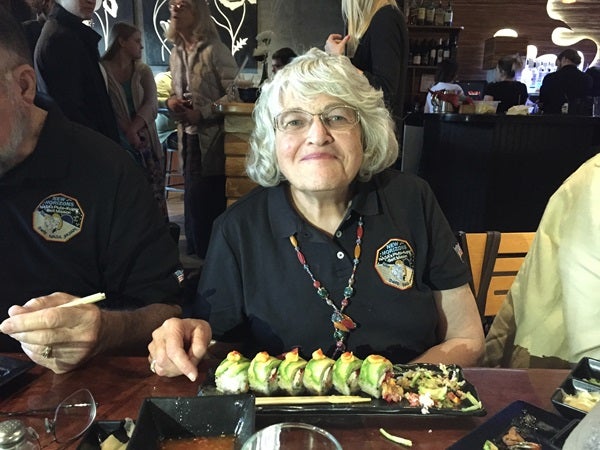Welcome to PlutoTown, USA, where business owners, residents, and scientists alike take pride in one of this community’s most endearing claims to fame, Clyde Tombaugh’s discovery of Pluto at Lowell Observatory in 1930.
The 24-year-old Tombaugh’s eureka experience, which Time magazine called the scientific discovery of the decade, brought worldwide attention to Flagstaff and cemented its identity as a center for scientific pursuits. But Pluto’s Flagstaff roots go much deeper than this singular discovery.
Here, Percival Lowell began searching for his theoretical “Planet X” in 1905, an effort that would endure his death and see its successful conclusion by a later generation of Lowell scientists. Then, 48 years after Tombaugh’s 1930 discovery of Pluto, Jim Christy of the U.S. Naval Observatory in Washington, D.C., discovered Pluto’s first known — and largest — moon, Charon, while examining photographic glass plates captured with the 61-inch telescope at the Naval Observatory’s Flagstaff station.
Ten years after that, several astronomers at Lowell Observatory joined an effort to observe a Pluto occultation. Some of these scientists rode aboard the Kuiper Airborne Observatory while others staffed ground-based telescopes in the Southern Hemisphere. Using refined observational techniques, they discovered a tenuous atmosphere around Pluto.
In 1998, a team of astronomers including Lowell’s Marc Buie (now with the Southwest Research Institute in Colorado) created the first surface map of Pluto. Buie was also involved with the 2005 discovery of the Pluto moons Nix and Hydra.
Today, Lowell astronomer Will Grundy is a co-investigator on NASA’s New Horizons mission, which will reveal details of Pluto never before seen.
All these Flagstaff ties to Pluto science are not lost on this community in northern Arizona. Earlier this year, locals turned out to see New Horizons boss Alan Stern share the inspiring story of the development of the mission. An even larger crowd is expected when Stern returns to Flagstaff in September as the keynote speaker for the Flagstaff Festival of Science, the longest-running free science festival in the country.
Stern’s program, which will feature the first-ever close-up images of Pluto, will take place in the 1,500-seat Ardrey Auditorium at Northern Arizona University. This facility’s lobby houses a series of clay models that depict planets as humans, incorporating the characteristics of each planet into the individual pieces. This exhibit, created by local ceramic artist Paula Rice, couldn’t be better located for Stern’s program. Where else than PlutoTown, USA, would one expect to find scientists and artists, lay public and merchants standing shoulder to shoulder in celebration of that tiny planetary body that calls Flagstaff home?
Kevin Schindler is a science writer at Lowell Observatory in Flagstaff, Arizona.










